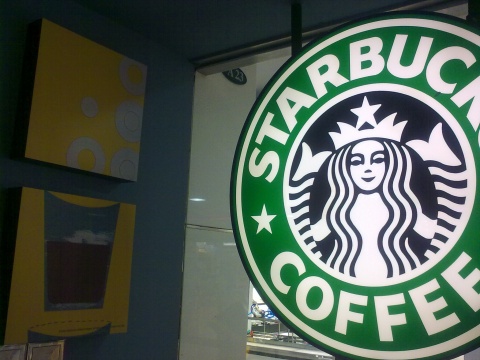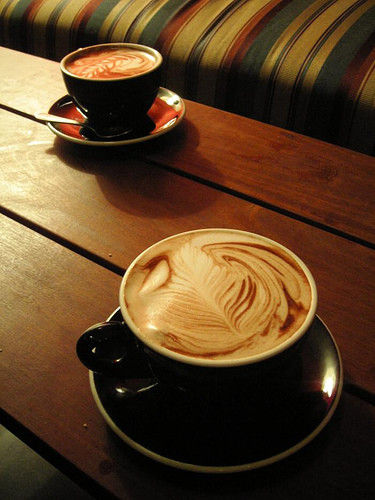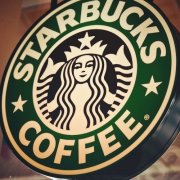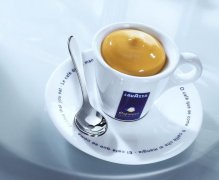Chinese Coffee Culture in the eyes of the Financial Times
Sitting in the middle of a group of coffee drinkers, whether you're on your cell phone or surfing the Internet, everyone knows you're at Starbucks, and it's a secret if you wear a Victoria's Secret. The petty bourgeoisie has changed to drink Pu'er, so whether you are holding the Analects of Yu Dan or the three Kingdoms of Yi Zhongtian, as soon as you sit in front of Pu'er, you will become "a beautiful scenery" against Pu'er. Who drinks a cup of coffee and how to drink it may not have much to do with coffee. [let me say a few words]

Starbucks
Now drinking a 25-yuan medium latte at Starbucks is no longer a very "present" thing, even if you drink it in the Forbidden City, it is also a very common thing.
I remember that when Chinese mainland first joined Starbucks, the Financial Times conducted a special survey, saying that drinking a cup of Starbucks coffee in China was obviously more fashionable than buying a piece of Victoria's Secret international brand underwear. Yeah, sitting in the middle of a group of coffee drinkers, whether you're on your cell phone or surfing the Internet, everyone knows you're at Starbucks, and it's a secret if you wear a Victoria's Secret.
I thought it was reasonable to look at it at that time. Now think about it, several years have passed, times have changed, and there have been girls in half of silk stockings walking all over Huaihai Road in the streets of Shanghai, whether they are black short stockings in the lower half or tight trousers similar to gym bicycle trousers in the upper half. once the lace of the stockings is covered with a black background, it is naturally amorous to walk in the street. So when the Financial Times compares the pleasure of drinking coffee with the lingerie taste of fashionable women, it is obviously a bit like Qin Qiong.
The coffee industry association spent a lot of money on various coffee promotion activities in Beijing and Shanghai. It was seven or eight years ago, when a cup of coffee plus a piece of Kenny G jazz and a selection of novels on the cover of Haruki Murakami. According to today's popular words, you are really talented, but it is still popular to say that you are too petty bourgeoisie at that time!
At present, according to my observation, the petty bourgeoisie has changed to drink Pu'er, so whether you are holding the Analects of Yu Dan or the three Kingdoms of Yi Zhongtian, only if you sit in front of Pu'er, you will become "a beautiful scenery" against Pu'er.
For example, the demand for seats near the window of a book bar in Shenzhen has been in short supply for years, which meets the basic needs of this landscape: beautiful women with long gills have long hair and bow their heads to read, and the seats look very beautiful and sit very hard. drivers need to pay attention to driving safety but will not consciously ignore the road conditions, it is best to stop to share the sunset, so business is booming, which is called kung fu outside the window.
What understands consumer psychology better than this book bar is Kenneth Roman, president of Ogilvy Advertising in the United States. At first, tobacco companies hired the father of public relations to persuade women to smoke, mainly relying on his creativity to create a common impression of romantic smoking among women.
Roman is also a veteran of marketing, came up to tell coffee dealers, the price competition is not good, selling coffee is selling coffee quality, value and image! Although this sentence was said in the 1980s, it is estimated that even a village head in China will tell you that we are not selling so-and-so, we are selling culture! Roman simulates several typical roles of potential coffee customers. One is Mr. and Mrs. John, who both have jobs and are in their thirties, for whom drinking coffee is a "way of life." Mr. and Mrs. Paul, who are about to retire in their fifties, money is not a problem, but money is also a big problem, so the cheaper the coffee they want, the better. Rachel, another single woman who is busy at work, spends as much time drinking coffee as Mr. Lu Xun, so she doesn't spend too much time in the kitchen, so instant bagged coffee is best for her. As for the "Millers" who are over 60, their health is important when they are old, and decaffeinated coffee seems to be right. Finally, Henry, who is still in college, is a child who grew up drinking Coke. Coffee is obviously out of date for him. What is the final diagnosis? That is to target different customers, locate different markets and develop different products, among which the most potential ones are "Mr. and Mrs. John" and "Henry".
Mr. and Mrs. John are the typical yuppies in the 1980s. The coffee sold to them must have a variety of choices and a character that makes them feel like they have a choice. From then on, you can not only wear clothes to show your taste, but also drink your true self with a cup of coffee. Now even beer or coke is following this path, every day is the "true self's choice", what "personality" or "discerning eye" are this kind of marketing ecstasy.
Young "Henry" is a problem, but it's not a big problem, because as long as the stylish, stylish and professional "John and Mrs. John" drink coffee as part of their status symbol, college students who can't afford a PRADA or ARMANI will find that a cup of coffee worth more than 20 yuan is actually very cost-effective and stylish.
The speech delivered by the president of Ogilvy in 1981 is simply the Zunyi meeting in the history of the coffee industry in China. The industry, which is worrying about the declining sales of coffee, has finally found new hope and developed special coffee that emphasizes taste, origin and image.
In fact, the conversion process is not complicated in the first place. Coffee comes from different places and different ways of stir-frying, but in the past, they were always mixed at the last minute; now they are sold in small quantities. Then small bean makers, such as Starbucks, thrive.
In fact, as the world's spirits marketing master, Scotch Whisky is also such a technique, in the world set off a hot blend of whisky, and then the next city, began to sweep the global popularity of single malt whisky, the same method, the result is the same.
Therefore, who drinks a cup of coffee and how to drink it may not have much to do with coffee.

Coffee culture is steaming in China
Singapore's Straits Times article on November 29, the original title: coffee enters China angrily
As China becomes richer, coffee culture is springing up in the land of tea drinkers.
Coffee consumption is growing at an astonishing 15% a year, compared with the global average of 2%, according to the London-based International Coffee Organization. This partly stems from the reality that China's starting point is relatively low. The average Chinese drink only three cups of coffee a year, compared with 500 to 700 cups for Americans. However, because of the size of the Chinese market, analysts see great potential.
The rise of coffee in China is due to the spread of western coffee culture. An international brand opened its first coffee shop in China 10 years ago and now has 390. Young white-collar workers like to find a quiet place to read or hang out with friends. The manager thinks that the environment there is an ideal place to do business. "it's a good place to sit down and talk," said du Yuan, 25, who works for a consulting firm in Beijing. " He goes to the coffee shop two or three times a month.
Local entrepreneurs have also joined the competition. Qi Ming, a lecturer at a university who opened his own coffee shop two years ago, said: "many Westerners like to drink pure black coffee. But coffee lovers here are not used to the bitterness. They prefer cappuccinos and lattes. " Westerners like to drink in the morning, but many Chinese like to have a refreshing drink in the afternoon or evening. But the price of 20 to 30 yuan a cup is still higher than most Chinese can usually afford. "if you want coffee to be more popular in China, the price is a little lower," du said. "
Important Notice :
前街咖啡 FrontStreet Coffee has moved to new addredd:
FrontStreet Coffee Address: 315,Donghua East Road,GuangZhou
Tel:020 38364473
- Prev

Coffee shop culture Starbucks culture coffee shop culture
Coffee lovers may have heard of Starbucks, the protagonist of a well-known American novel more than a century ago. In the 1970s, three Americans turned it into a coffee shop sign to promote the American spirit. Since then, a cup of Starbucks coffee has fascinated the whole world. Starbucks can send one of the oldest goods in the world.
- Next

Coffee shop culture and Chinese crowdfunding coffee shop culture
I do not know when coffee came into Chinese life, coffee is no longer just a cup of drink in hand, it has become a cultural and social carrier. Asking for a cup of coffee or tea in a cafe and chatting with friends is the warmth of reunion after a long separation and the comfort of being busy. Others sit quietly in the cafe, watching the sunset, thinking or relaxing. There are a lot of people who will
Related
- How did the Salvadoran coffee industry develop in Central America?
- What exactly does the golden cup extraction of coffee mean?
- The Origin of Coffee flower
- [2023 Starbucks World Earth Day] there are more meaningful things besides free Starbucks coffee!
- What kind of coffee is there in Spain? 9 Flavors of Spanish Coffee
- Aromatic African coffee| Kenya's coffee culture and historical production area
- Liberica Coffee Bean knowledge: the characteristics of Liberian Coffee beans of the three original species of Coffee beans
- The origin and formula of Spanish latte introduces the taste characteristics of Bombon coffee in Valencia, Spain.
- How to adjust the solution of over-extracted coffee
- What is the tasting period of coffee beans? What is the period of coffee and beans? How should coffee wake up and raise beans?

